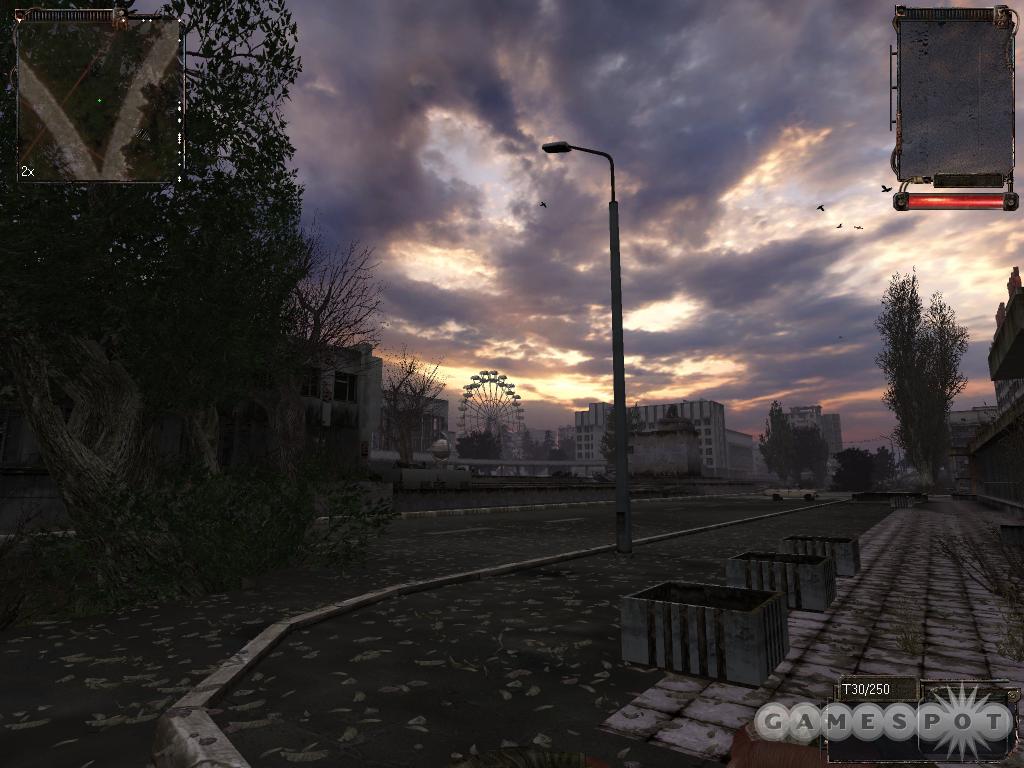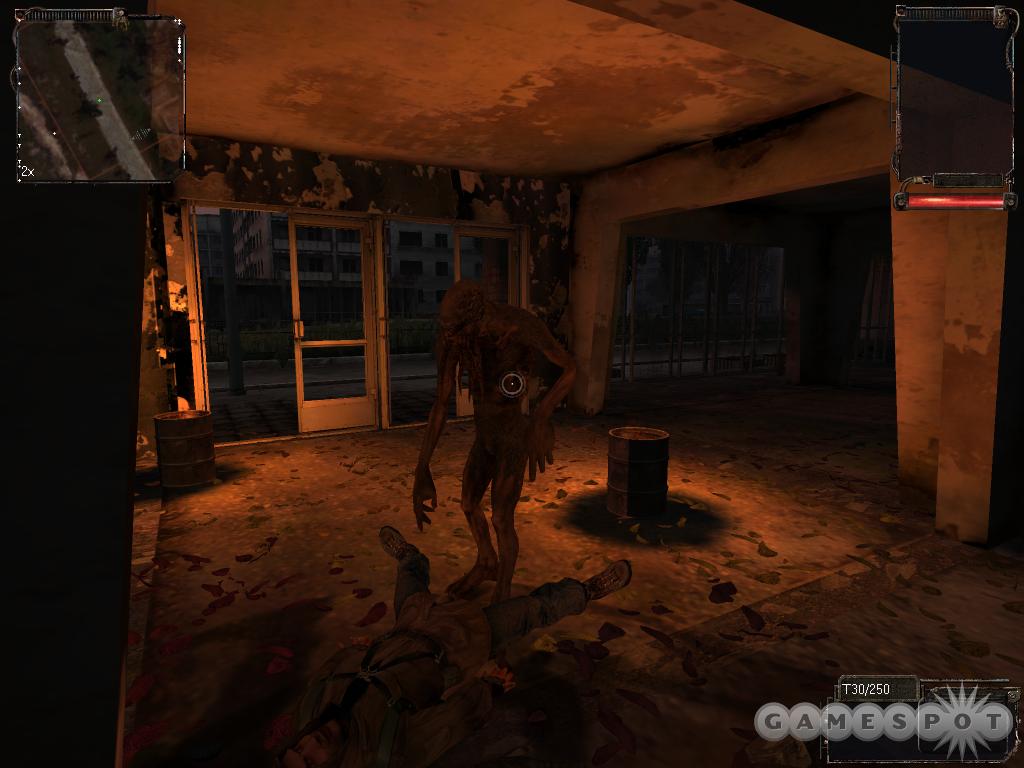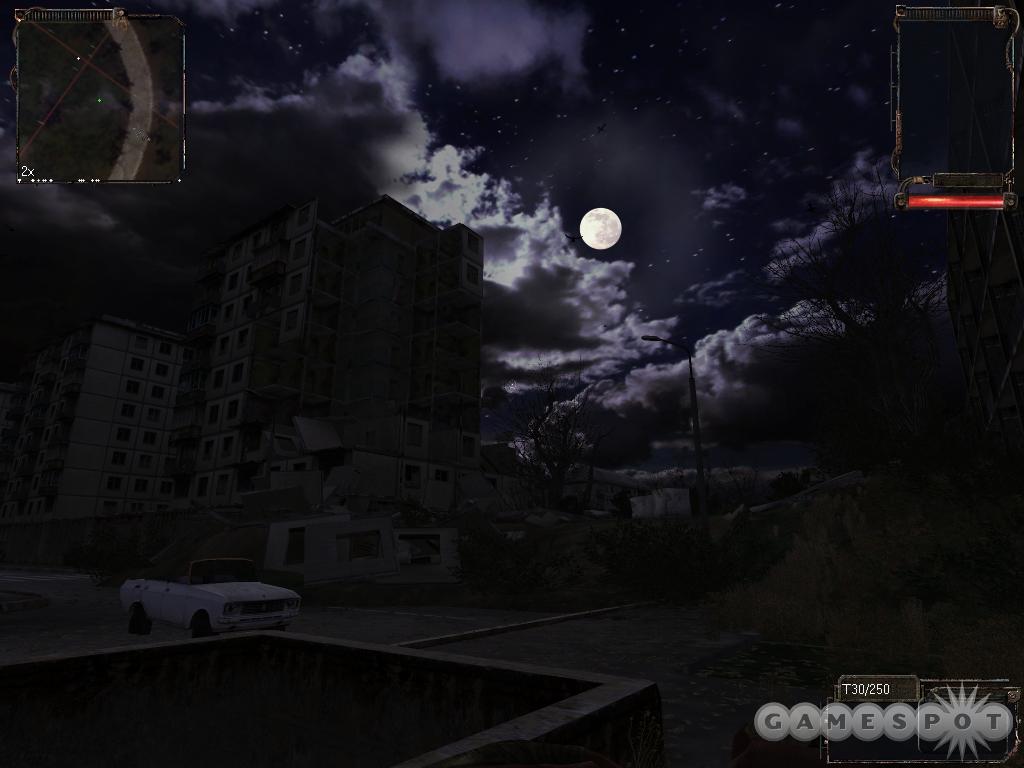S.T.A.L.K.E.R.: Shadow of Chernobyl Designer Diary #1
GSC Game World's Oleg Yavorsky begins this series of designer diaries by explaining the team's inspiration for this innovative postapocalyptic game.
Ukraine-based developer GSC Game World is taking an unusual approach to its upcoming action RPG hybrid PC game, S.T.A.L.K.E.R.: Oblivion Lost. While S.T.A.L.K.E.R. has a futuristic sci-fi premise that includes a society of competing scavengers who scour their surroundings for remnants of highly classified research, the game itself takes place at none other than Chernobyl, the site of the devastating 1986 nuclear meltdown. The game's environments have been created with more than 1,000 on-location photos that the development team captured over the course of two visits to the site, and what we've seen so far seems to confirm it. The game features very, very impressive-looking areas, including open wilderness regions and abandoned cities, all adorned with remarkably crisp-looking textures.

While S.T.A.L.K.E.R. has certainly been a good-looking showpiece for computer graphics in general, the game itself is perhaps even more intriguing than its appearance. The team apparently drew inspiration from both Russian filmmaker Andrei Tartovsky's Stalker and from the novel that inspired that movie, Russian novelists Boris and Arkady Strugatsky's Roadside Picnic. The game paints a grim picture of a bombed-out, irradiated area bereft of normal life after a second reactor meltdown at Chernobyl in the near future. But this time, it seems that the meltdown wasn't simply due to overload--rumor has it that the government had been conducting numerous top-secret experiments before the disaster occurred. The area itself, which is referred to simply as "the Zone," now contains numerous random areas affected by radiation (and perhaps other things) that are referred to as "anomalous" areas, as well as highly valuable items, known as "artifacts," that have somehow absorbed this anomalous energy.
While the government has declared the Zone off-limits, scavengers have begun to quietly invade the site in search of these artifacts, since these rare items command an extremely high price on the black market. You play as one of these scavengers, known as stalkers, and will prowl the area in search of these items while carefully attempting to avoid stumbling into an anomalous area, in which all metal objects might become highly magnetized or gravity itself might be negated. In the meantime, you must defend yourself against wandering animals and irradiated mutants, which have been sighted in the region--and you must also defend yourself against rival stalkers, since each stalker seeks to bring home the most artifacts first. In fact, thanks to the game's advanced AI, it should be possible for rival stalkers to form alliances with you, attack you, or outdo you when it comes to collection--they'll actually be able to complete the game before you do if your own survival skills aren't up to snuff. For more on this intriguing game, we're joined by GSC Game World's Oleg Yavorsky, who has graciously agreed to provide this designer diary for GameSpot.
Starting From Ground Zero
Oleg YavorskySenior PR Manager, GSC GameWorld
S.T.A.L.K.E.R. is a survival-based first-person shooter game set in the area surrounding Chernobyl. The game offers an array of physical and psychological hazards posed by psychotropic weapons, zombies, telepathy, telekinesis, mutant creatures, deadly "anomalous" zones, and rival human factions.
In the game, you have a huge, persistent world to explore, and all of its locations are joined into one global map called "the Zone." You're free to select any path in the Zone without limitations. Therefore, you'll spend your time in traveling, reconnaissance, combat with mutants and humans, and, of course, accomplishing both randomly generated and storyline-imposed tasks.
S.T.A.L.K.E.R. offers a nonlinear storyline. There is an ultimate goal, but you choose the path yourself. Additionally, the events in the Zone happen irrespective of your participation in them--aside from very mission-specific events, nothing is ever triggered purely because of one of your actions--and all characters in S.T.A.L.K.E.R. have their own artificial intelligence routines and their own differing motivations and tasks.

The advantage of a nonlinear storyline is that it's impossible to see everything within one play-through. In every subsequent play-through, you will see life in the Zone from a slightly different perspective. Only the key events and certain locations with strong storyline-imposed parts will go unchanged, while the rest will live and evolve in a nonscripted and dynamic way. We are planning to have more than eight different endings for the game. The ending will depend on which actions you've taken throughout the course of the game. The game's main story will remain enigmatic and will not fully develop until you're playing through the last parts of the game. We are attempting to make this story mysterious, strong, and dramatic.
About the game's background: The idea to create a game set in Chernobyl came to us long ago. Our office is located just 100 kilometers away from the site of the biggest man-made catastrophe of all time--the explosion at the Chernobyl atomic power plant. Apart from literally being close to home, the accident in Chernobyl is something we all here remember pretty well from childhood. Indeed, some of our team members' parents were actually in Chernobyl to help clear up the aftermath of the accident. Naturally the topic itself is very close to us, so we are very careful not to make fun of the accident and of the tragic deaths that occurred and are still occurring. We want to create a game of forewarning against such accidents in the future, a forewarning against criminal carelessness and negligence.
The background story of S.T.A.L.K.E.R. is built upon the very real events that took place in the 1980s. Back then, there was a gigantic antenna in Chernobyl, which, according to some experts, emitted psychoactive waves designed to influence peoples' thoughts and moods. In some of the photos we took during our research trips to Chernobyl, the structure of the antenna can be seen on the horizon.
According to persistent but unverified rumors, an ongoing experiment that was to gauge psychotropic influences on humans was being conducted at Chernobyl. We are basing the storyline of S.T.A.L.K.E.R. around such semi-documentary facts and rumors and are weaving in the theories and conspiracies that surrounded the plant and the accident. We have speculated on what might have happened and what a possible outcome of that speculation might bring.

In terms of the game's atmosphere, with S.T.A.L.K.E.R., we're doing our best to render an incredibly eerie and evocative mood that does justice to the size of the industrial and ecological catastrophe that took place. All the notorious areas of the Zone will be easily recognizable. The game will feature the Chernobyl power plant sarcophagus, the dead city of Pripjat, the Red Forest, and other sites. Photos and video footage captured during our research trips has allowed us to build a realistic re-creation of the exclusion zone--all of the textures are authentic copies of the buildings in the Chernobyl area. In all, over 60 percent of the Zone we created in S.T.A.L.K.E.R is an authentic model of this very real, but very deadly, place.
Got a news tip or want to contact us directly? Email news@gamespot.com
Join the conversation